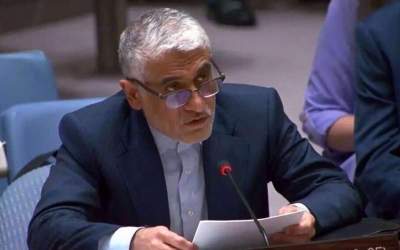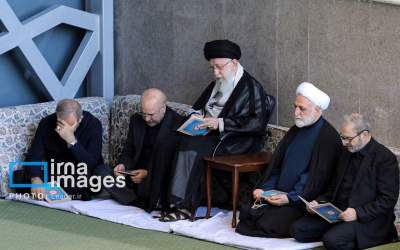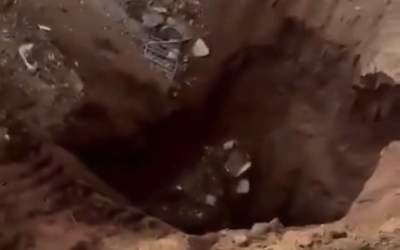Wednesday 8 April 2015 - 16:43
Story Code : 159082
Ernest Moniz: Iran deal closes enrichment loophole
Last week�s nuclear agreement with Iran closes what some experts had called a potentially major loophole that could make it easy for Iran to reconstitute its program, according to unpublished details of the deal described by U.S. Energy Secretary Ernest Moniz.
Moniz, who is taking the lead in explaining the deal for the Obama administration, told POLITICO in an interview that Iran won�t be allowed to reduce its 11-ton stockpile of partially enriched uranium by converting it to an oxide form, a process that is easily reversed.
That process would be akin to turning water into ice cubes, which can be melted at any time, experts say.
�Simply converting it does not alleviate the issue,� Moniz said in the interview Monday evening. �Simple conversion to a different chemical form would not count.�
Instead, Moniz said, the deal requires Iran either to ship the uranium out of the country or to dilute it to a form similar to its harmless natural state.
Experts describe diluting low-enriched uranium as more like watering down, say, a glass of juice. There is no way to reverse that act short of a laborious process that separates the juice from the water.
In effect, dilution would return the low-enriched uranium to its natural state, giving the material no value to Iran above mined uranium.
�This is an important clarification,� said Gary Samore, president of United Against Nuclear Iran and a former Obama White House nonproliferation official. He added that deal skeptics �should be satisfied� with the provision, even as other key issues remain unresolved.
A State Department fact sheet on the deal issued last week said only that �Iran has agreed to reduce its current stockpile� of nuclear material down to a few hundred pounds. The fact sheet did not specify how that would happen.
Under the interim agreement reached with Iran in November 2013, Iran was allowed to convert some of its stockpile from gaseous form, which is used for enrichment, to solid oxide.
Some experts had flagged the ambiguity as crucial. For months, U.S. negotiators believed they had an understanding with Iran that called for Tehran to ship its stockpile to Russia. But Iran balked at that plan in the final days of talks before last week�s deal.
The issue matters because the more nuclear material Iran keeps within its borders, the faster it can theoretically produce a nuclear weapon if it cheats on the deal.
On Monday, Israel�s minister for intelligence and strategic affairs, Yuval Steinitz, said that a final nuclear deal should require that Iran send its stockpile out of the country.
Moniz said that will only be one option. Under the agreement, which is set to be finalized by June 30, any material Iran does not dilute could either be sold to another country or shipped to Russia, for conversion to fuel for a Russian-built nuclear reactor inside Iran. (That reactor, at Bushehr, is not considered part of a potential weapons program.)
�So it�s sending it out of the country � for example to Russia to be Bushehr fuel,� Moniz said. �It could be diluted. Or it could be sold on the international market. They�ll have to choose among them.�
At issue is Iran�s low-enriched uranium � material that has been spun in centrifuges to achieve a potency suitable for nuclear reactors but not sufficient for a bomb. The 2013 interim deal capped Iran�s stockpile at a 5 percent enrichment level.
Enrichment percentages describe the concentration of the fissile isotope U-235, which is only found in trace amounts in natural uranium, but whose concentration can be raised by spinning uranium at high speeds in centrifuges.
A nuclear bomb requires the U-235 enriched to a purity of 90 percent or more, although the percentages are misleading. The pace of enrichment accelerates over time. Thus, in terms of effort required, even reactor fuel enriched to a purity of 5 percent is roughly three-quarters of the way to bomb grade.
Last week�s agreement caps Iran�s stockpile at about 600 pounds of uranium � not enough to produce a bomb. (Iran does have natural uranium in its soil, but the deal will impose close monitoring of the country�s uranium mines.) The material can be enriched no higher than 3.67 percent. The stockpile restriction lasts for 15 years.
U.S. officials say those restrictions, along with limits on centrifuges and research and development, push Iran�s �breakout� time � the time needed to dash to a bomb � from two to three months to one year.
In the interview, Moniz called that figure �very, very conservative,� noting that it describes only the time it would take Iran to produce enough highly enriched uranium for a bomb if it chose to do so, but does not include the technical work of building a device.
�The usual definition of breakout time in nonproliferation discussions is the time to a weapon. We are saying only the time to assemble the material. Obviously there is a lot more you have to do to assemble a weapon.� Moniz declined to estimate how much longer that might take.
by Politico
# Tags










